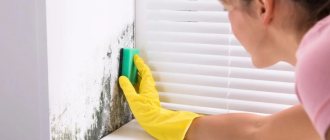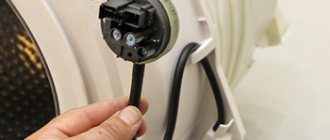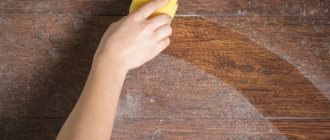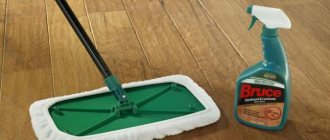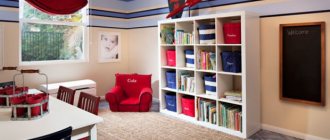In the home of even the cleanest housewife, dust forms from time to time. It is impossible to get rid of it completely. After all, even in a house where no one lives, after a while a large gray layer appears. To find out why and where dust comes from in an apartment, you first need to understand what its composition is.
Dust is small solid particles ranging in size from 0.01 to 10 microns. It is divided into small and large. The big one is the one that annoys us. It accumulates in corners and under the sofa, and lies in a layer on shelves and furniture. However, the greatest danger comes from fine dust, which we, in principle, do not see. A large amount of it is found in polluted air. Penetrating into our body, it damages the walls of blood vessels and is harmful to health.
What is dust
Dust
- These are small solid particles ranging in size from 0.01 to 10 microns. First of all, it is necessary to separate coarse and fine (or fine) dust. Coarse dust is exactly what irritates us so much. A layer of gray “fluff” that accumulates in corners, on bookshelves and under the sofa. In fact, the greatest danger to us is fine dust that we don’t even see. It is found in large quantities in polluted city air and penetrates our body, damaging the walls of blood vessels and harming our health.
BOOK
Book dust is a product of paper breakdown. It is “produced” not only by old books, but also by paper wallpaper, as well as boxes and other things made from cellulose. There is a lot of this in attics, in basements where paper archives are stored, in libraries (including home ones, where books are on open shelves), as well as in general in old apartments that have not been renovated for a long time. Unfortunately, the vacuum cleaner copes poorly with such dust. The dust that is formed when erasing paper easily penetrates the human respiratory tract. Therefore, it is quite allergenic. Plus contains various impurities due to paints, as well as mold particles.
What to do about it: keep books in closed cabinets and separate rooms - definitely not in the bedroom or in the nursery.
Where does dust come from?
A significant part of the dust, as a rule, consists of tiny particles of dead skin and fabric fibers. Other dust contributors range from human and pet hair to soil particles, pollen, mold spores, dust mites and other minor sources. Also in some homes, dust contains waste products of cockroaches, termites, ants or other insects. There is especially a lot of dust after renovation. In addition to domestic sources of dust, there are also natural ones - for example, scientists recognize the Sahara Desert as the largest source of dust. Volcanic ash, fires, meteorites and comets, seas and oceans are also to blame for the formation of dust. Such dust is not afraid of hundreds of thousands of kilometers: it will overcome all obstacles to get into your apartment.
Humidify the air
The most effective way to combat dust is to buy a humidifier. Pay attention to how much area of the room the device can cover. More expensive models have additional air purification and ionization functions. You can also increase the humidity in your apartment using household methods. For example, after a shower, leave the bathroom door open, hang wet laundry on the radiators, or place a bucket of water near the radiator. A nice bonus: air humidification has a good effect on the condition of the skin and hair, especially during the heating season.
How to deal with dust in an apartment
You can't remove large sources of dust from your life, such as clothing, furniture, carpets and, in fact, human skin. However, you can use quality home cleaning methods. Then the amount of dust will be significantly reduced. Always wipe dust from top to bottom
– otherwise dirt from surfaces that are higher than others will settle on the already cleaned furniture.
Carpets should be vacuumed and shaken every week. Carpets are world class dust collectors
and when you step on them they release dust back into the air.
It is worth taking care of the furniture. For example, couch cushions, like carpeting, create, collect, and release dust into the air when you sit on them. Sofas, beds, and chairs can be vacuumed or knocked out using a thick, damp cloth. Also pay attention to curtains
: they need to be washed and steamed regularly.
Dust mites live in almost every home because they like warm, moist environments. They breed in bedding and other places where there may be a lot of epidermal particles, and contribute their waste products to the general dust level. In most cases, this is not a problem: just wash your bedding and care for your upholstered furniture regularly. Take inventory of your apartment
. Perhaps some things should be thrown out altogether, and others should simply be replaced. Instead of feather pillows, take padding polyester ones, get rid of unnecessary decorative items and unnecessary clothes, old upholstered furniture. Don’t forget about soft toys: they are an excellent home for dust mites. There is absolutely no need to throw them in the trash; just wash them at high temperatures or put them in the freezer for several hours.
Why is there a lot of dust in the apartment?
The answer is simple: dust loves clutter.
Clutter demoralizes even the most desperate housewives, forcing them to spend a lot of time and effort on cleaning. Store various trinkets and things you rarely use in a glass cabinet or drawer. Spend 5 minutes a day to put everything in its place - the dust will simply have nowhere to come from. Our wardrobe also affects the total amount of dust. Just imagine how much dust we bring from the street along with our clothes! Pay close attention to laundry and closet organization. It is better to pack seasonal items in vacuum bags. The worst accumulation of dust is located where it is quite difficult to clean
- under the bed, sofa, behind the refrigerator or closet, in the corners of the pantry, etc. When wet cleaning, it is recommended to pay the most attention to these places. Fortunately, mops and vacuum cleaners are now being produced with a variety of attachments that can get into hard-to-reach places. The most difficult to reach places are at the top of the cabinets - to wipe them from dust, you always need to stand on a chair or stool. How to remove dust in this case? If you are not very concerned about the aesthetic appearance of the room, you can put old newspapers or large format paper on the “roof” of the cabinet - when the dust settles on it, it can be rolled up and thrown away. There is no need to deal with a thick layer of dust on the surface of the cabinet itself. Another tip: if you need to remove dust from textured surfaces, such as picture frames, lampshades and other decorative elements, use a regular brush.
Technogenic sources
Its quantity depends on the location of the house. The largest number appears in an apartment if it is located:
- on the lower floors;
- near the road (the more intense traffic along it, the more dust);
- near industrial facilities and open-pit mining of coal, gravel, sand, etc.;
- near the construction site.
It will be difficult to deal with dust if your neighbors decide to renovate. By the way, the quality of your own repairs also significantly affects the intensity of dust formation.
Another source is our wonderful fertile soil. Under the influence of the sun and wind, the fertile layer dries out, turning into the finest air suspension, easily transported through the air over vast distances.
The proximity to “breathing” volcanoes also makes itself felt.
To prevent fine dirt from flying in from the street, take care of good windows with high-quality seals. Do not open them in windy weather, but after the rain has passed, the best time for ventilation comes.
The only way to combat natural dust is through insulation; there is no other way.
Dust repellents
Damp cloth
- that's all you need to collect dust from hard, smooth surfaces. Dust sticks to the fabric rather than flying and spreading through the air. The main thing is not to use an overly wet cloth: a large amount of water combined with dust creates dirt and can ruin the finish of your beautiful furniture. Cotton or microfiber rags absorb water better and remove dirt.
When cleaning, it is better not to use a broom or broom - they only raise dust into the air and spread it throughout the apartment.
It is widely believed that indoor plants
. We have already said that the role of green assistants is somewhat exaggerated. Of course, plants have a positive effect on the microclimate, but wet cleaning in combination with climate control technology will wipe the nose of any ficus
About vacuum cleaners and other equipment
The best vacuum cleaners have a water filter. The least effective ones are those with fabric garbage bags. From such models, up to 1/3 of the collected dust is returned into the space during operation. Washing models often raise humidity above normal levels, which can lead to mold. They are best used for cleaning smooth floors made of linoleum, tiles or stone.
A great invention is robotic vacuum cleaners. If there are shaggy pets in the house, these modest workers will not live long, but in a house without animals they are very effective. Turn on the robot and it rolls around on the floor, sucking up crumbs, hair, threads and other dirt. You can get rid of most of the dirt that has settled on the floor without any effort. The fight for cleanliness becomes just fun.
An expensive but effective thing is an air purifier. True, it needs to be moved from place to place all the time - the range of action is small, only about a meter. And the purifier can only handle one room. But it really allows you to quite effectively get rid of microparticles flying around the room.
You can use a humidifier that works on the “cold steam” principle for cleaning. It is also often called an “air washer.” This device also needs to be rearranged. The advantages are the restoration of normal humidity in the house and, if desired, aromatization.
The ionizer is able to slightly reduce the amount of dust in the air. Under its influence, the particles become heavier and settle. They become easier to remove.
How to wipe furniture to prevent dust from settling?
A little physics:
As is known, microparticles have a small electrical charge and are attracted to a surface charged with the opposite charge. To prevent this from happening, antistatic agents are used: they reduce the ability of objects to accumulate static electricity, and dust simply does not settle on furniture and household appliances. The modern market is flooded with a variety of cleaning products with varying degrees of effectiveness. To choose the right product, you need to know what it is intended for. Before use, you must read the instructions - otherwise, instead of cleanliness in the house, you risk observing an unsightly dense coating on horizontal surfaces.
- To prevent dust from sitting on furniture for a long time, use polish
(or anti-dust). It contains antistatic agents for furniture against dust. The polish also adds shine to furniture elements. Thus, dust does not settle on the armrests or table, but simply “slides” off them. Nevertheless, anti-dust furniture is not a panacea: you will still have to do wet cleaning, but at least not so often. - There are special antistatic agents
that remove dust and dirt. It is best to choose an antistatic agent that can be used while the equipment is turned on and that does not require subsequent treatment with a napkin or rag. - Some sprays
eliminate static electricity and kill dust mites. They should be used no more often than once every six months. They are mainly used to treat walls, carpets and textiles. - Everything is clear with hard surfaces, but how to wipe upholstered furniture? Special impregnation
spreads over the entire surface of the piece of furniture, as if forming a protective film that prevents dust from penetrating inside. However, the furniture will have to be cleaned so that the impregnation does not turn into a thick coating. - If you prefer folk remedies, vinegar
. In a glass of cool water, add 50–75 ml of vinegar, two teaspoons of olive oil and a couple of drops of any essential oil. Then pour the resulting solution into a spray bottle and treat the furniture with it. This method also destroys unpleasant odors.
The main thing when choosing household chemicals is to carefully select the composition of the product. Avoid names of toxic substances on the packaging - these include chlorine, ammonium, phosphates, triclosan. Also remember that many cleaning products cause irritation to the skin and respiratory tract, so it is worth arming yourself with rubber gloves and a face mask.
GYPSUM
Many people don’t even know about the existence of such dust. Nevertheless, it is quite possible to encounter it in an ordinary apartment - in particular, where there are plasterboard decorative elements: partitions, arches, pseudo-columns, etc. Drywall generates quite a lot of dust, thereby increasing the load on the residents’ bodies, causing irritation of the respiratory tract.
What to do about it: do not skimp on materials for repairs, do them more often (ecologists generally say that there is less dust where repairs are carried out regularly), and during work use protective equipment such as glasses and masks. The rest of the time - wet cleaning.

